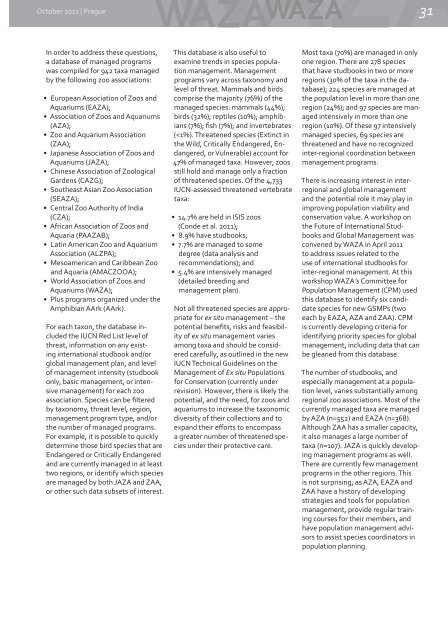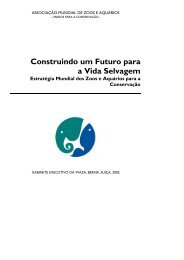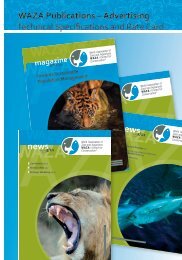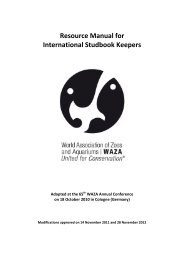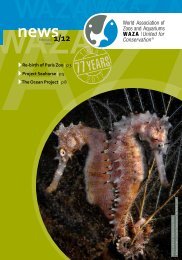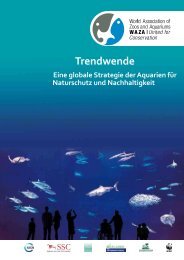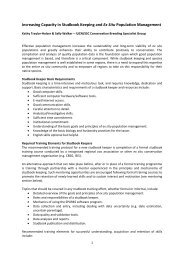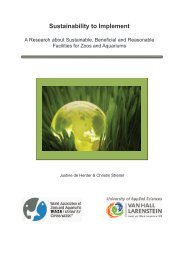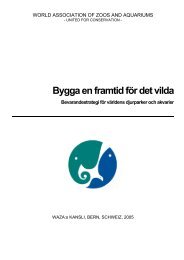Prague - WAZA
Prague - WAZA
Prague - WAZA
You also want an ePaper? Increase the reach of your titles
YUMPU automatically turns print PDFs into web optimized ePapers that Google loves.
October 2011 | <strong>Prague</strong> 31<br />
In order to address these questions,<br />
a database of managed programs<br />
was compiled for 942 taxa managed<br />
by the following zoo associations:<br />
• European Association of Zoos and<br />
Aquariums (EAZA);<br />
• Association of Zoos and Aquariums<br />
(AZA);<br />
• Zoo and Aquarium Association<br />
(ZAA);<br />
• Japanese Association of Zoos and<br />
Aquariums (JAZA);<br />
• Chinese Association of Zoological<br />
Gardens (CAZG);<br />
• Southeast Asian Zoo Association<br />
(SEAZA);<br />
• Central Zoo Authority of India<br />
(CZA);<br />
• African Association of Zoos and<br />
Aquaria (PAAZAB);<br />
• Latin American Zoo and Aquarium<br />
Association (ALZPA);<br />
• Mesoamerican and Caribbean Zoo<br />
and Aquaria (AMACZOOA);<br />
• World Association of Zoos and<br />
Aquariums (<strong>WAZA</strong>);<br />
• Plus programs organized under the<br />
Amphibian AArk (AArk).<br />
For each taxon, the database included<br />
the IUCN Red List level of<br />
threat, information on any existing<br />
international studbook and/or<br />
global management plan, and level<br />
of management intensity (studbook<br />
only, basic management, or intensive<br />
management) for each zoo<br />
association. Species can be filtered<br />
by taxonomy, threat level, region,<br />
management program type, and/or<br />
the number of managed programs.<br />
For example, it is possible to quickly<br />
determine those bird species that are<br />
Endangered or Critically Endangered<br />
and are currently managed in at least<br />
two regions, or identify which species<br />
are managed by both JAZA and ZAA,<br />
or other such data subsets of interest.<br />
This database is also useful to<br />
examine trends in species population<br />
management. Management<br />
programs vary across taxonomy and<br />
level of threat. Mammals and birds<br />
comprise the majority (76%) of the<br />
managed species: mammals (44%);<br />
birds (32%); reptiles (10%); amphibians<br />
(7%); fish (7%); and invertebrates<br />
(


